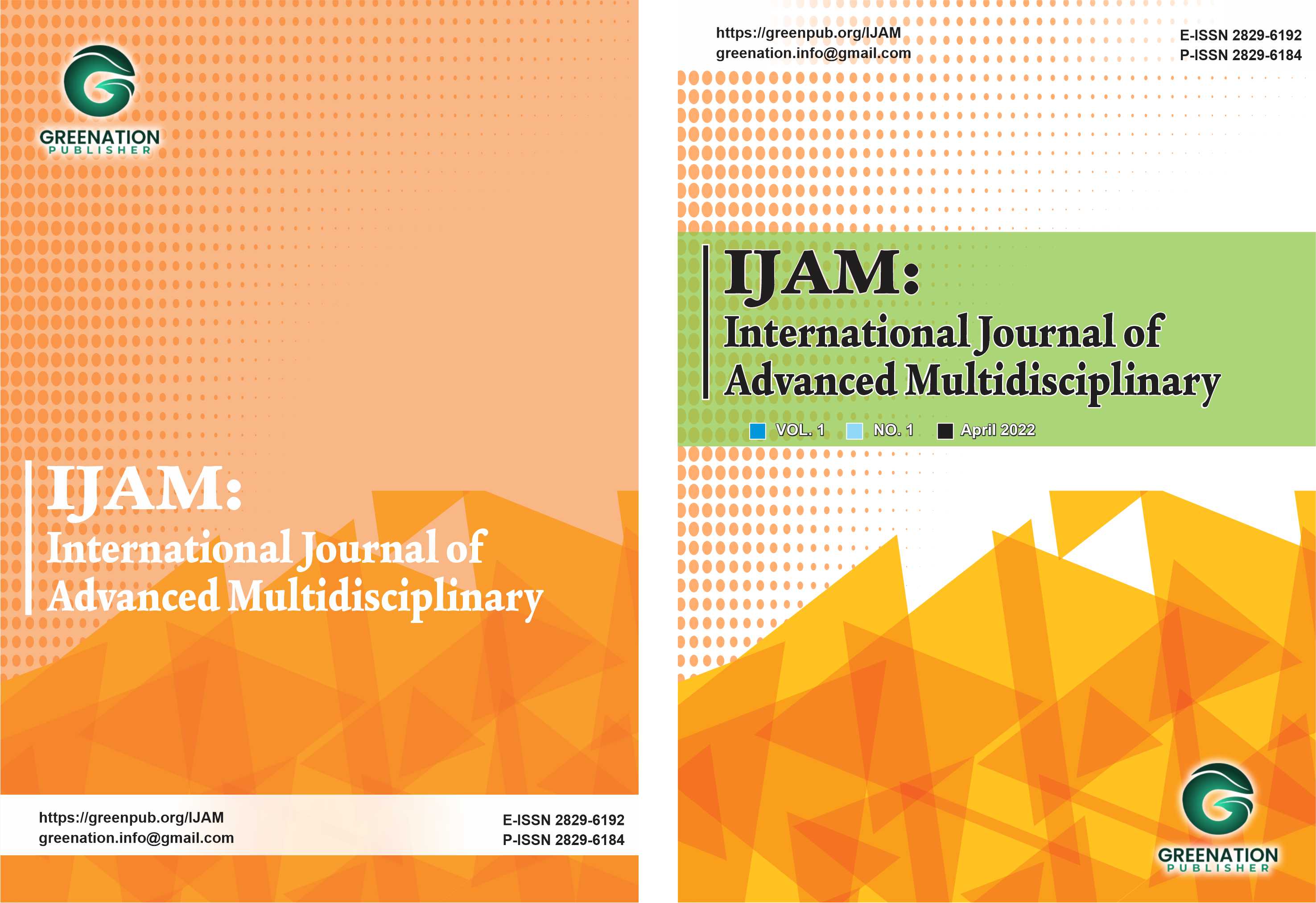Tree Vegetation Diversity In The Natural Reserve Of Jagat Mountain Sumedang
DOI:
https://doi.org/10.38035/ijam.v2i4.473Keywords:
Diversity, Nature Reserve, TreesAbstract
Mount Jagat is a 133.64-hectare nature reserve area that is directly adjacent to the village and community agricultural land. The designation and management of nature reserves aim to conserve biodiversity, prevent species extinction, protect the forest as a life-support system, and sustainably utilize biodiversity. The threats posed by anthropogenic activities in the Mount Jagat area indicate the need for an inventory and analysis of species diversity, especially tree vegetation, as a first step for conservation. Data collection was carried out using nested quadrats which were placed systematically based on the Land Mapping Unit (LMU). The quadrats were 20 m x 20 m for trees, 10 m x 10 m for poles, 5 m x 5 m for saplings, and 2 m x 2 m for seedlings. The data were then analyzed using Family Importance Value (FIV), Importance Value Index (IVI), Shannon's Diversity Index (H'), and global conservation status by the International Union for Conservation of Nature (IUCN). There are 78 species from 32 families found in the study area. The results showed that the highest FIV for trees was the Moraceae family, 15.43%. The highest FIV for polishes and saplings were in the family Euphorbiaceae with 20.65% and 23.60% respectively. The highest FIV at the seedlings level was the Lauraceae family at 28.47%. Two species were found that had IVI above 10% in almost every growth stage, namely Machilus rimosa (Blume) Blume. and Orophea hexandra Blume. Machilus rimosa (Blume) Blume. found at the tree, pole, sapling, and seedling levels. Orophea hexandra Blume. found at the pole, sapling, and seedling levels. The H' values for the stages of tree growth, polishing, sapling, and seedling were 1.71, 1.63, 1.47, and 1.39, respectively, included in the moderate diversity category. Globally, there are 2 species categorized as vulnerable (VU) and 1 species near threatened (NT) based on IUCN data.
References
Arunkumar, A.N., Warrier, R.R., Kher, M.M. et al. 2022. Indian rosewood (Dalbergia latifolia Roxb.): biology, utilization, and conservation practices. Trees 36, 883–898. https://doi.org /10.1007/s00468-021-02243-3
Atmoko, T & Mukhlisi. 2021. The Conservation of Proboscis Monkey in Suwi River, East Kalimantan, Indonesia. BIO Web of Conferences 33, 01004 (2021). https://doi.org/ 10.1051/bioconf/20213301004
Aussenac, R., Bergeron, Y., Gravel, D., Drobyshev, I. 2019. Interactions among trees: A key element in the stabilizing effect of species diversity on forest growth. Functional Ecology 33(2019):360–367. https://doi.org/10.1111/1365-2435.13257
Borogayary, B., Das, A.K., Nath, A.J. 2018. Tree species composition and population structure of a secondary tropical evergreen forest in Cachar district, Assam. Journal of Environmental Biology 39:67-71. DOI:10.22438/jeb/39/1/MRN-487
Dodo & Hidayat, S. 20202. The structure, composition, and threatened plants in The Kinarum Protected Forest, South Kalimantan, Indonesia. Biodiversitas 21(6):2603-2618. DOI: 10.13057/biodiv/d210632
Febriana, I., Kusmana, C., Rahmat U.M. 2019. Composition of Plants and Spread Analysis of Langkap (Arenga obtusifolia Mart.) in Ujung Kulon National Park. JPSL 10(1):52-65. http://dx.doi.org/10.29244/jpsl.10.1.
Genung, M.A., Fox, J., Winfree, R. 2020. Species loss drives ecosystem function in experiments, but in nature, the importance of species loss depends on dominance. Global Ecology and Biogeography 29(9):1531-1541. https://doi.org/10.1111/geb.13137
Gogoi, A & Sahoo, U.K. 2018. Impact of anthropogenic disturbance on species diversity and vegetation structure of a lowland tropical rainforest of eastern Himalaya, India. J. Mt. Sci. 15 (2018):2453–2465. https://doi.org/10.1007/s11629-017-4713-4
Grindean, R., Tantau, I., Feurdean, A. 2019. Linking vegetation dynamics and stability in the old-growth forests of Central Eastern Europe: Implications for forest conservation and management. Biological Conservation 229(2019):160-169. https://doi.org/10.1016/j.biocon. 2018.11.019
IUCN. 2023. The IUCN Red List of Threatened Species. Version 2022-2. https://www.iucnredlist.org [13 August 2023]
Herrera-Feijoo, R.J., Torres, B., López-Tobar, R., Tipán-Torres, C., Toulkeridis, T., Heredia-R, M., Mateo, R.G. 2023. Modeling climatically suitable areas for mahogany (Swietenia macrophylla King) and their shifts across neotropics: The role of protected areas. Forests 2023, 14, 385. https://doi.org/10.3390/f14020385
Hop, N.V., Hung, B.M., Trong, H.Q. 2020. Diversity of Lauraceae Family in Hon Ba nature reserve, Khanh Hoa Province. Journal of Forestry Science and Technology 9(2020):44-52
Mewded, B., Negash, M. Awas, T. 2020. Woody species composition, structure, and environmental determinants in a moist evergreen Afromontane forest, Southern Ethiopia. J. For. Res. 31, 1173–1186 (2020). https://doi.org/10.1007/s11676-019-00894-0
Munawaroh, E., Yuzaami, Purwanto, Y. 2020. The Euphorbiaceae (Spurge Family) in Bogor Botanic Gardens, Indonesia: Diversity, conservation and utilization. Biodiversitas 21(11):5021-5031. DOI: 10.13057/biodiv/d211106
Pradhan, A., Ormsby, A., Behera, N. 2019. Diversity, population structure, and regeneration potential of tree species in five sacred forests of western Odisha, India. Ecoscience 26(1):85-97. DOI: 10.1080/11956860.2018.1522148
Rahman, M.R., Rahman, M.M., Chowdhury, M.A. 2020. Assessment of natural regeneration status: the case of Durgapur hill forest, Netrokona, Bangladesh. Geology, Ecology, and Landscapes 4(2):121-130. https://doi.org/10.1080/24749508.2019.1600911
Salwanafi, D. A., Susanto, D., Aniarko, V. P., Utami, I. 2023. The Diversity of Tree Types of Pananjung Pangandaran Nature Reserve. Jurnal Belantara, 6(1):126–135. https://doi.org/ 10.29303/jbl.v6i1.861
Downloads
Published
How to Cite
Issue
Section
License
Copyright (c) 2024 Sri Wilujeng, Raizal Fahmi Solihat, Reni Anggraini

This work is licensed under a Creative Commons Attribution 4.0 International License.
Authors who publish their manuscripts in this journal agree to the following conditions:
- The copyright on each article belongs to the author(s).
- The author acknowledges that the International Journal of Advanced Multidisciplinary (IJAM) has the right to be the first to publish with a Creative Commons Attribution 4.0 International license (Attribution 4.0 International (CC BY 4.0).
- Authors can submit articles separately, arrange for the non-exclusive distribution of manuscripts that have been published in this journal into other versions (e.g., sent to the author's institutional repository, publication into books, etc.), by acknowledging that the manuscript has been published for the first time in the International Journal of Advanced Multidisciplinary (IJAM).























